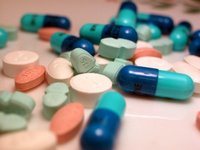 A postal survey included a random sample of 4,500 Australians aged ≥ 50 years between in 2009-2010 and the response rate was 37%.
A postal survey included a random sample of 4,500 Australians aged ≥ 50 years between in 2009-2010 and the response rate was 37%. Medications use was very common, 87% of participants took one or more drug (called medicines in Australia) and 43% took five or more in the previous 24 hours.
Complementary medicines were used by 46% of participants.
The most commonly used medications were:
- antihypertensive agents, 43% of participants
- natural marine and animal products including fish oil and glucosamine, 32%
- lipid-lowering agents, 30%
Doctors recommended 79% of all medications and 93% of conventional medications.
Much medicines use was to prevent future disease by influencing risk factors.
In a 2011 study, 4 medication classes were linked to 67% of drug-related hospitalizations:
- warfarin, 33%
- insulins, 14%
- oral antiplatelet agents, 13%
- oral hypoglycemic agents, 11%
High-risk medications were implicated in only 1.2% of hospitalizations.
50% of these hospitalizations were among adults 80 years of age or older. 65% of hospitalizations were due to unintentional overdoses.
Classification of adverse reactions to drugs: "SOAP III" mnemonic (click to enlarge the image):
Adverse drug reactions (ADRs) affect 10–20% of hospitalized patients and 25% of outpatients.
Rule of 10s in ADR:
10% of patients develop ADR
10% of these are due to allergy
10% of these lead to anaphylaxis
10% of these lead to death
References:
A national census of medicines use: a 24-hour snapshot of Australians aged 50 years and older. Tessa K Morgan, Margaret Williamson, Marie Pirotta, Kay Stewart, Stephen P Myers and Joanne Barnes. MJA 2012; 196 (1): 50-53, doi: 10.5694/mja11.10698
4 medication classes linked to 67% of drug-related hospitalizations
Image source: Wikipedia, public domain.